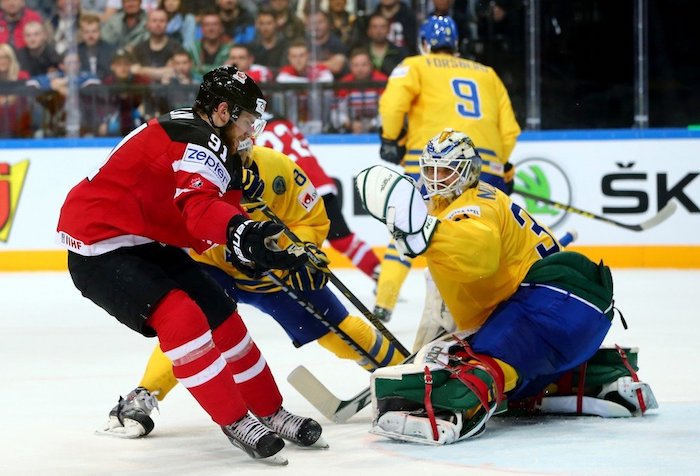Also Interesting
How are EU law and US law different?

The federal government is made up of more than just the 50 states that make up the U.S. It also includes the District of Columbia and a few overseas territories. The European Union consists of 27 European countries which came together to form the EU, an economic and political union that had never been done before. Even though the European Union (EU) is not a federal government, the way power is shared between the EU’s three governing institutions and its member states is very similar to how power is shared in a federal government. The United States of America has a written constitution, but the European Union does not. On the other hand, the EU Treaties are like a constitution because they spell out who has what power and how laws are made.
Most of the time, EU countries are still responsible for more policy areas than US states. Members of the EU can set health policies (with some help from the EU), but in the US, this is the job of both the federal and state governments. Since the countries that are part of the EU are sovereign, this makes sense.
Why is it important to know this? The EU, on the other hand, has both a central and a national level in charge of environmental policy. Cooperative federalism is one of the most important ideas in the U.S. The federal government’s rules and regulations set a standard for how strict state rules and regulations must be.
Primary VS Secondary Law
All of the other things that the EU does are based on treaties. In these legally binding agreements between EU member countries, the goals of the EU, the rules that EU institutions must follow, how decisions are made, and the relationship between the EU and its members are all explained. You can find examples and studies on this topic on the service Writix with free examples. Treaties are the basis for the laws of the European Union (EU). In the EU, they are called “basic law”.
Secondary law is a set of rules, directives, decisions, recommendations, and views that are made by the government. This set of rules is called ‘secondary law”, and it comes from the goals and ideas behind the treaties.
Legislative Versus Non-legislative Acts
Most legislative acts are passed by following one of the legislative procedures outlined in EU treaties (ordinary or special). Acts that aren’t part of the legislative process don’t have to follow these rules. Instead, EU institutions can pass them by following certain rules.
The European Union (EU) can only make laws in areas where its member states have given it explicit permission to do so through EU treaties.
What is the difference between laws, statutes, acts, and rules in the United States and the European Union?
The language used to talk about art in Europe and the United States can be different. Here are some things that need to be explained.
In the United States, both federal and state laws are about making sure people follow rules about how to act. Congress makes federal laws, statutes, and acts, while executive departments and agencies use a rulemaking process to make federal rules.
When it comes to enforcing the laws that are already on the books, federal rules are more specific than federal laws about how an agency should do this. If rules aren’t followed, penalties could be put in place.
Institutions of the European Union can make rules and directives by using either regular or special legislative processes. But how they are put into place is different.
As soon as European rules take effect, they are automatically put into place in all of the EU’s member states at the same time. No national translation is needed first. But the Member States still have to take care of some administrative tasks (for instance, designate the authorities responsible for implementation or to set out penalties for non-compliance).
Directives, on the other hand, can’t take effect until they are put into national law. However, Member States are free to implement European policies in any way they think is best. To put it simply, directives are a lot more flexible than rules because they only make you do something if you want to get a certain result.
Directives make up most of the EU’s environmental laws, but rules are becoming more common in areas like chemicals and product safety as the need for an integrated approach grows.
There is a big difference between how far US states can go and how far EU member states can go with their laws.
US vs EU regulations: States Can Go Further than Members
EU’s legislative institutions, like the EP and EU Council, use the legislative procedure to make rules. In the US, rules are made by the Executive Branch using the rulemaking process, which we’ve already talked about.
In the United States, regulations are made public as soon as new laws are passed. These regulations explain how the laws will be carried out and fill in any gaps or ambiguities that may arise. On the other hand, European regulations are longer pieces of law that can still be added to and changed by delegated and implementing actions of the Commission, as well as by national administrative rules.
In terms of environmental policy, federal laws and rules are the starting point, but each state in the U.S. is free to make laws that are more strict.
In European Union law, however, things are a bit different. If EU countries are encouraged to have more strict environmental laws than those set by EU directives, this won’t hurt the Single Market. To put it another way, they can’t affect how freely goods and services can move around the EU.
To make matters worse, European Union member states are less likely to put in place more strict rules in areas that are already covered by EU law (such as chemical approvals and trash shipping, to mention a few).
Also Interesting
PlayAlberta’s Struggle to Compete With International Platforms

Even though PlayAlberta is the only legal online gambling platform in the province, approximately 55% of Albertans access offshore online casino websites and sports betting sites. Multiple reports indicate that PlayAlberta only captures 25% to 45% of the Alberta iGaming market, and as a result, billions of dollars are flowing to international operators rather than remaining in provincial hands.
International platforms have gained a loyal following of Albertan players by providing what government-backed PlayAlberta often cannot. According to Esports Insider Canada insights, these offshore sites typically offer players more game variety, better bonus structures, and faster withdrawal processing.
The competitive disparity is so large that earlier this year, the legislature passed Bill 48, also known as the iGaming Alberta Act, to try to bring offshore operators under a regulated regime by opening up Alberta’s market to private operators. At a press conference before the bill was tabled, Minister Nally was frank enough to recognize the reality: online gambling grows in the province regardless of legislation, and if Bill 48 is defeated, that will not prevent offshore gambling from expanding.
Alberta lawmakers are taking action towards an Ontario-style iGaming market by 2026. Consequently, players still choose international sites, rather than the government-sponsored alternative. The offshore platforms are not a novelty. They have been working in digital shadows for years, creating loyalty through offerings that PlayAlberta can’t compete with. Despite attempts to create a friendly gaming environment in Alberta, the regulated platform has not managed to attract its target audience. It was supposed to be something safer, more home-grown. On the other hand, many players find it limited, constraining, or ultimately simply not as competitive as that which exists elsewhere.
Offshore casinos keep libraries of at least thousands of games. Their online gambling platforms feature popular online slots, table games, live dealer titles, and specialty software. In collaboration with leading studios like Games Global, Pragmatic Play, and Evolution Gaming, they bring to Alberta content that Albertans already know and love. PlayAlberta’s library, on the other hand, is still modest.
While it provides a decent balance of slots, table games, and lottery-style selections, its library is limited, and updates are infrequent. Additionally, for players who prefer novelty or the latest releases, the controlled platform is just too restrictive. This is one of PlayAlberta’s greatest shortcomings, pushing players to offshore platforms where they can get scale, variety, and content updates regularly.
The bonus imbalance worsens PlayAlberta’s competitive deficit. The provincial site provides welcoming bonuses, cashbacks, reload promotions, and exclusive offers to bettors for Alberta sports teams. Offshore platforms offer the same range, but in much larger quantities. New users of PlayAlberta who deposit $10 get $50 in bonus cash.
A player who deposits the same amount at an average offshore site can get a matching bonus of up to 100% of the deposit amount up to $2,000, with the addition of 200 bonus spins. The difference is stark, as pointed out above. PlayAlberta has asserted that responsible and sustainable play is important. However, against larger bonuses, the decision of many players is clear.
PlayAlberta recently unveiled a new, more colourful logo to emphasize its homegrown advantage. Its mobile app has been updated with a new interface design, including cleaner navigation and improved performance across additional betting verticals. AGLC VP of Gaming Dan Keene explained that PlayAlberta is the Albertans’ entertainment destination, adding that in order to improve overall player experience, app functionality will keep expanding. He was excited about how the brand has grown and developed over five years into a platform that celebrates the unique identity of Alberta.
However, these enhancements are not really competitive when compared to major offshore sites that invest heavily in mobile-first design. Their apps are lightweight, offer smooth in-game transitions, and come with customization options. PlayAlberta’s interface is functional, and supports digital wallet integration as well as responsible play functions. However, its customization and interactive features are still basic compared to other competitors worldwide.
Also Interesting
Historic Return: NHL Confirms Player Participation in 2026 Winter Olympics

The NHL has officially confirmed the inclusion of its players in the 2026 Winter Olympics in Milan-Cortina, Italy, following a 12-year absence that left the fans craving the excitement of the real best-on-best international hockey. The announcement is a historical event, as it goes back to the Olympic arena where the hockey powerhouse nations of the world will eventually be faced with their complete NHL prowess.
The ruling has not only shaken the hockey fraternity but also the sports fraternity at large, as it has generated early predictions, betting debates, and revived rivalries. Also, such large websites as GGBet, where many fans place their bets, have also been on the lookout, offering odds and analysis on which country will win gold.
A Long-Awaited Comeback
Since the 2014 Olympics in Sochi, NHL players have not been given the chance to play in the Olympics. The spectators have since witnessed world championships that, even though competitive, did not have the superstar appeal of Olympic hockey. This decision of the league in selecting the players to Milan-Cortina is a recreation of the desires of the NHL and the international arena to become one again.
The 2026 tournament will be the one offering the excitement, talent, and passion that will be fitting among NHL players. These legends, such as Sidney Crosby, Connor McDavid, Auston Matthews, and Leon Draisaitl, could play with young players like Jack Hughes and Tim Stützle – that sort of experience and youth.
The Tournament Breakdown
The event in hockey will take place between 11 and 22 February 2026, and the team count will be 12, which will be divided into three groups:
● A: Canada, Switzerland, Czechia, France.
● B: Italy, Finland, Sweden, Slovakia.
● C: Latvia, Denmark, the US, Germany.
The teams will be playing three pre-elimination games followed by play-off, which will lead to the final match, and a gold medal will be given on February 22.
Slovakia is going to play against Finland, and Sweden against Italy. Team USA starts playing on February 12, and Team Canada plays against Czechia. The matches would all be at either the Santagiulia Ice Hockey Arena or the Rho Ice Hockey Arena, both in Milan.
Why This Moment Matters
It is not only entertainment but a legacy that the NHL has gone back to the Olympics. To the league, it reestablishes itself as the world body in professional hockey. To players, it makes their lifelong dream of playing in the national team a reality in the biggest sporting arena. And to fans, it revives the magic that made such moments as Crosby scoring his Golden Goal in Vancouver 2010 unforgettable.
Nevertheless, beyond the ice, such a move will make the NHL more global and strengthen the new generation of sportsmen. The Games of 2026 are expected to achieve a huge global following, whereby fans in North America, Europe, and other continents will be reached.
Looking Ahead
As the opening of February 2026 approaches, the teams are plotting, investigating, and preparing to contest a tournament that numerous people are calling the most competitive Olympic hockey tournament to date. The already existing dream is Canada vs. USA, Finland vs. Sweden, and national pride will clash against the NHL-type talent.
Final Thoughts
It is not a sports story, but a cultural phenomenon because NHL players are returning to the 2026 Winter Olympics. It is an embodiment of unity, excellence, and the unadulterated affection of hockey. The fans all around the world are eagerly awaiting the days when the puck will drop in Milan and they will be watching a show that has been 12 years in the making.
The tournament will not be remembered for the successive gold medals, but rather for the first face-off to the final gold medal celebration. It can be either your country that wins; it could be just watching the magic, but in any case, one thing is certain: the Olympics are back, and the game has never been this alive.
-

 Energy2 days ago
Energy2 days agoCarney bets on LNG, Alberta doubles down on oil
-

 Alberta2 days ago
Alberta2 days agoAlberta on right path to better health care
-

 Indigenous2 days ago
Indigenous2 days agoTop constitutional lawyer slams Indigenous land ruling as threat to Canadian property rights
-

 Alberta2 days ago
Alberta2 days agoCarney government’s anti-oil sentiment no longer in doubt
-

 Alberta2 days ago
Alberta2 days agoAlberta Emergency Alert test – Wednesday at 1:55 PM
-

 Alberta1 day ago
Alberta1 day ago‘Weird and wonderful’ wells are boosting oil production in Alberta and Saskatchewan
-

 Business1 day ago
Business1 day agoCanada is failing dismally at our climate goals. We’re also ruining our economy.
-

 Health2 days ago
Health2 days agoSPARC Kindness Tree: A Growing Tradition in Capstone





